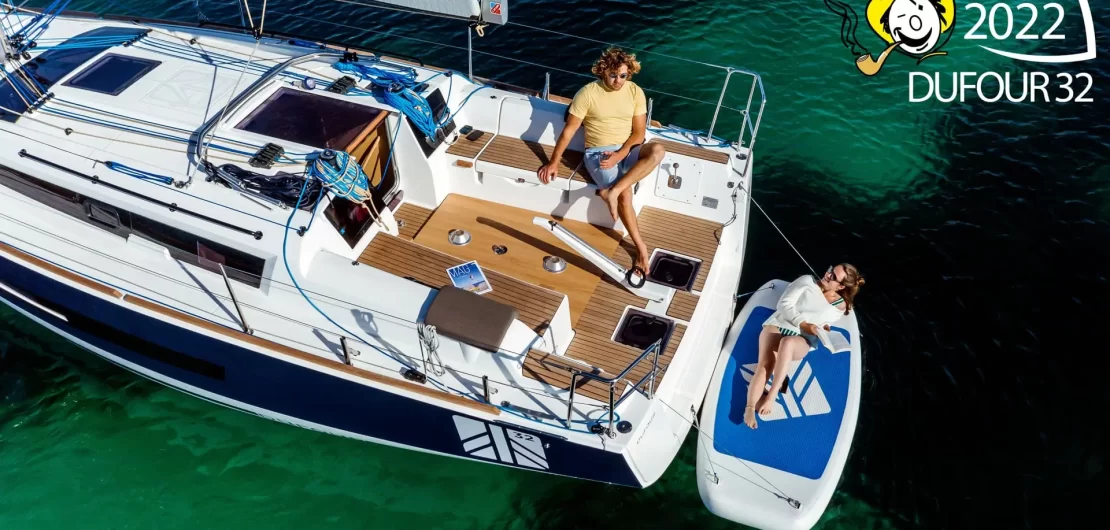
Yacht Syndicate
A Yacht Syndicate
For most people, the capital outlay and ongoing costs of high-end hobbies cannot be justified against expected use. A yacht syndicate will achieve the same as other hobby syndicates, such as owning an aircraft or a racehorse. This will never diminish if you have a passion for owning a yacht.
Therefore, If you identify with this passion, being part of a yacht syndicate where the purchase price and ongoing costs are one-quarter or even a sixth might be very attractive. A Yacht Syndicate is especially relevant if you keep a Mediterranean yacht. Few spend more than a couple of months in one year using a Yacht.
We aim to support the syndicate.
We bring together individuals who want the same goal. Most versions of a Yacht Syndicate will allow you the exclusive use of your share for about 12 weeks per year. An online calendar shows you exactly when your weeks start and finish. You can often exchange allocated weeks or additional weeks when the Yacht is used with other shareholders’ consent.
What we need to know
Decide which type of Syndicate you would like to join and email us. Some options are below, and we will be happy to send you more information if you are unsure what Syndicate will work for you.
- Company Syndicate, establishing a company with other individuals to save the cost of VAT on a new Yacht
- Agent Managed Syndicate, where we managed it for the first year to help it settle down.
- Self-Managed Syndicate, the individuals look after the boat themselves.
Forming a Yacht Syndicate
First, an individual will register as an interested stakeholder for a Syndicate. A small refundable deposit is made until other syndicate members are found. We will communicate the progress of the Syndicate discussing Yacht options. When we have a majority of stakeholders, we form a syndicate based on a collective agreement. The syndicates we create are based in Port Ginesta Marina Barcelona.
Each shareholder will have twelve weeks of exclusive use of the Yacht each year. Handover is much the same as if you are chartering a boat. However, all the owners know each other and are financially interested in looking after the Yacht. Therefore generally, yachts in syndicates require much less maintenance than charter boats.
All costs, such as insurance, marina berthing, and maintenance, are divided equally between the shareholders.
A shareholder can sell a share at any time and leave the Syndicate. The selling shareholder decides the value of the share. Our experience is shareholders usually stay in a syndicate for about three years, but there is no time limit.
The story of the Mytern
Mytern is a Bavaria 36 Yacht Syndicate that we formed in 2003. It has operated successfully in the UK as a self-managed syndicate for the past 17 years. Syndicate owners have enjoyed 12 weeks of use of the Yacht each year.
The owners of Mytern operate on the system we developed, where we manage the Syndicate for the first year. After the first year, the shareholders elect a member to be the manager and save the cost of our management fee. We kept all the papers for the yacht, so Syndicate owners could sell shares whenever they wished for the appropriate brokerage fee.
Initially, we did not encourage individuals to communicate with each other as we thought owners would like to remain private. Inevitably owners made contact and discovered they were part of a group of people who loved to go sailing. Now they often sail together and support each other as friends. In January 2020, the Yacht was put up for sale. The current syndicate members want to set up a new Syndicate together in the Mediterranean on a bigger Yacht. We plan to help them with this as we opened in Barcelona in early 2017.
Some simple maths
The Bavaria Yacht MyTern was purchased new from us in 2003.
The cost of each original share in 2003 was £ 18,333.00 plus VAT, making the new boat purchase price in 2003 circa £73,333.00 ex vat (£ 88,000.00 inc vat).
In 2020 (17 years later), she is for sale at circa £54,000.00, so that’s 13,500.00 per share. £18,000 – £13,500 = 4,500 loss over 17 years. Most owners kept the share for about three years, so the cost for each syndicate member is minimal.
Please contact us to learn more about setting up a yacht syndicate in Port Ginesta, Barcelona, Spain.



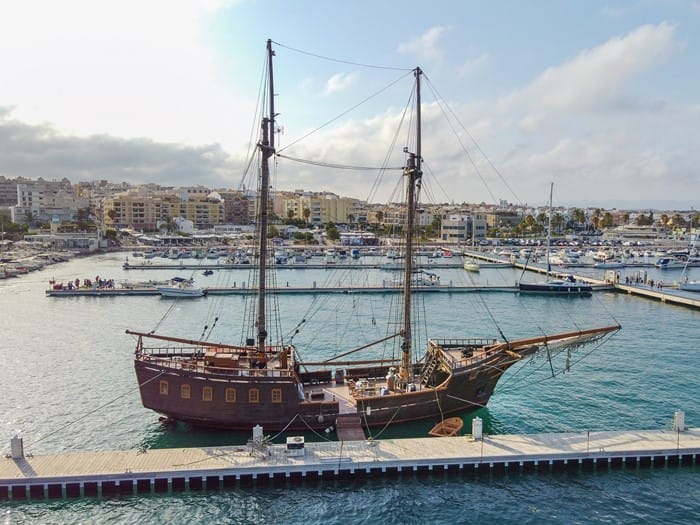


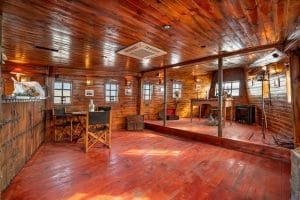


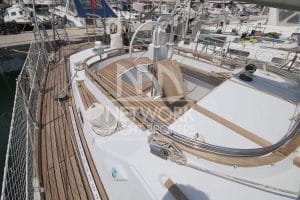
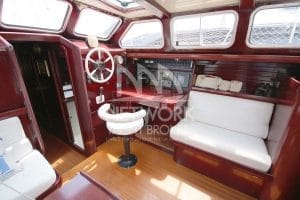
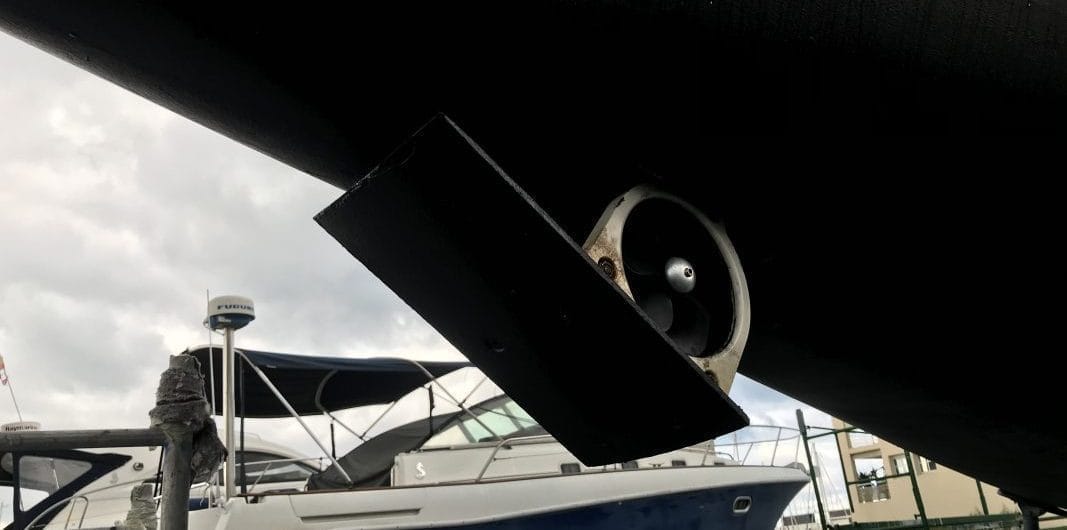
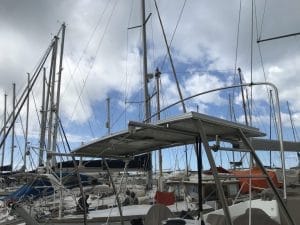
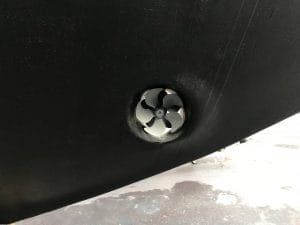
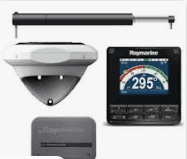 A modern-quality autopilot is worth its weight in gold (as they say). If you are sailing short-handed, then it is almost essential on a reasonable-size fin keel yacht. I can argue an exception if you sail a long-keel yacht. It is possible to set sails, add a little weather helm and keep on trucking(as they say). Locking the helm will require navigational input over time, but it’s great fun!
A modern-quality autopilot is worth its weight in gold (as they say). If you are sailing short-handed, then it is almost essential on a reasonable-size fin keel yacht. I can argue an exception if you sail a long-keel yacht. It is possible to set sails, add a little weather helm and keep on trucking(as they say). Locking the helm will require navigational input over time, but it’s great fun!

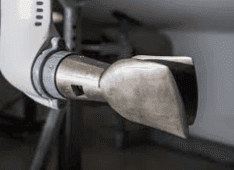 I selected reverse when sailing for years to save wear and tear on my yacht gearbox. They said that the components inside the gearbox are fixed and wearing (sounds reasonable) because the prop stops spinning. They also say that a fixed propellor creates less drag than a free-spinning prop (no idea about that). Then I met some people who sailed the Atlantic having to replace a gearbox on a reasonably modern yacht. Selecting reverse to lock the propellor over long periods puts a strain on the gearbox clutch that can cause It to wear out (wow, I never knew that). The solution, if you are concerned, is a folding propellor. It’s a lovely thing to have, and a buyer for your yacht will be happy you invested money in one.
I selected reverse when sailing for years to save wear and tear on my yacht gearbox. They said that the components inside the gearbox are fixed and wearing (sounds reasonable) because the prop stops spinning. They also say that a fixed propellor creates less drag than a free-spinning prop (no idea about that). Then I met some people who sailed the Atlantic having to replace a gearbox on a reasonably modern yacht. Selecting reverse to lock the propellor over long periods puts a strain on the gearbox clutch that can cause It to wear out (wow, I never knew that). The solution, if you are concerned, is a folding propellor. It’s a lovely thing to have, and a buyer for your yacht will be happy you invested money in one.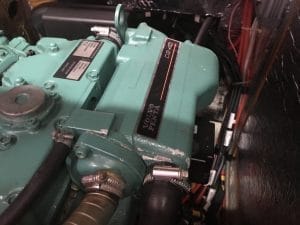
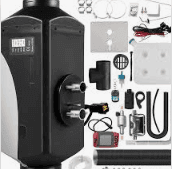
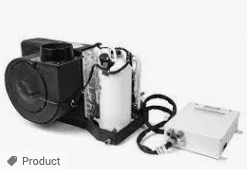 Perhaps the Dyson fan will work well in smaller boats, but Air conditioning with a reverse cycle heat setting will transform the pleasure of sailing when you can hook up to shore supply. Lots of Mediterranean Marinas do not charge for electricity. They see it as part of a package deal. So from the moment you arrive until you depart, you can keep the yacht chilled to a perfect temperature if you are in a marina. Just like heating, Air conditioning will transform your boating experience.
Perhaps the Dyson fan will work well in smaller boats, but Air conditioning with a reverse cycle heat setting will transform the pleasure of sailing when you can hook up to shore supply. Lots of Mediterranean Marinas do not charge for electricity. They see it as part of a package deal. So from the moment you arrive until you depart, you can keep the yacht chilled to a perfect temperature if you are in a marina. Just like heating, Air conditioning will transform your boating experience.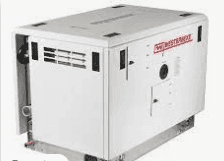 Before you buy a yacht, you must know that ff you plan to spend a lot of time at anchor and are spicing up a new 15-metre-plus yacht, then a factory fit generator might be on your list of extras. It only made my list because I wanted to comment on the difference between fitting a low-cost aftersales unit and a proper factory-integrated unit. A Lot of research is needed if you are going down the generator installation route. In my experience, few companies can save money on a factory-installed unit.
Before you buy a yacht, you must know that ff you plan to spend a lot of time at anchor and are spicing up a new 15-metre-plus yacht, then a factory fit generator might be on your list of extras. It only made my list because I wanted to comment on the difference between fitting a low-cost aftersales unit and a proper factory-integrated unit. A Lot of research is needed if you are going down the generator installation route. In my experience, few companies can save money on a factory-installed unit.
 Let me explain the thinking behind the statement above. For example, let’s take the Hamble in the UK. This is a place where buyers can find every type of boat. However, if I was interested in buying a racing yacht, the Hamble in England might be a good starting point to investigate racing yachts. The Hamble is the centre of the UK Marine industry and where many companies support sailing as a sport. On the other hand, if I was looking to purchase a superyacht, I might contact Yach Brokers along the southern French coast in or around Monaco.
Let me explain the thinking behind the statement above. For example, let’s take the Hamble in the UK. This is a place where buyers can find every type of boat. However, if I was interested in buying a racing yacht, the Hamble in England might be a good starting point to investigate racing yachts. The Hamble is the centre of the UK Marine industry and where many companies support sailing as a sport. On the other hand, if I was looking to purchase a superyacht, I might contact Yach Brokers along the southern French coast in or around Monaco. We hadn’t been open for business long in Spain when an enquiry came in from North America. I was fascinated by a young Canadian couple’s mindset. They inquired about a 15-metre sailing yacht we had just put for sale on brokerage in Barcelona. They planned to fly to Barcelona (they said it looked like an easy place to get to with lots of boats). They would buy a one-way ticket and sail the yacht back to Canada after first learning to sail in the Mediterranean, where sailing was easy. Wow, the logic was astonishing. Look at the Globe and the Mediterainina was nothing more than a big lake. Plenty of places to visit. Perhaps they would spend a summer in Europe before crossing the ocean. Put that way, It sounds fantastic!
We hadn’t been open for business long in Spain when an enquiry came in from North America. I was fascinated by a young Canadian couple’s mindset. They inquired about a 15-metre sailing yacht we had just put for sale on brokerage in Barcelona. They planned to fly to Barcelona (they said it looked like an easy place to get to with lots of boats). They would buy a one-way ticket and sail the yacht back to Canada after first learning to sail in the Mediterranean, where sailing was easy. Wow, the logic was astonishing. Look at the Globe and the Mediterainina was nothing more than a big lake. Plenty of places to visit. Perhaps they would spend a summer in Europe before crossing the ocean. Put that way, It sounds fantastic!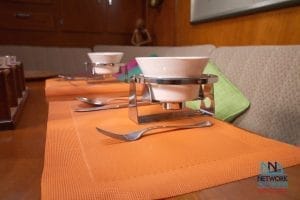

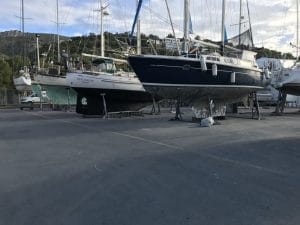


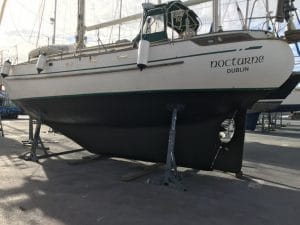
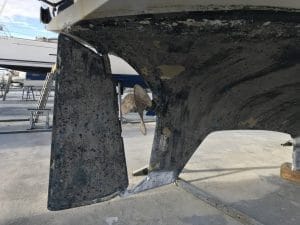


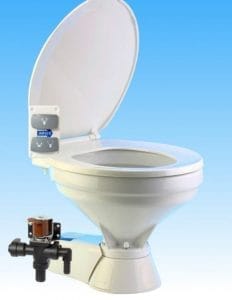

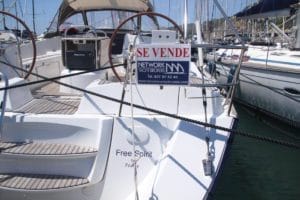

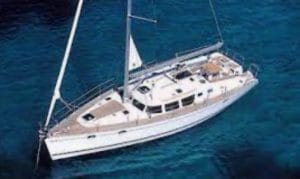 Many years ago, we took a beautiful Jeanneau 43 DS Yacht in exchange for a new Jeanneau 47 Ds. The 43 was in Palma Majorca, Spain. Part of the deal being we collected the PX and shipped it back to the base in North Wales. The deal was done, so we flew to Mallorca to collect the yacht. We sailed her back to Northern Spain, where she was collected by truck and delivered to the UK.
Many years ago, we took a beautiful Jeanneau 43 DS Yacht in exchange for a new Jeanneau 47 Ds. The 43 was in Palma Majorca, Spain. Part of the deal being we collected the PX and shipped it back to the base in North Wales. The deal was done, so we flew to Mallorca to collect the yacht. We sailed her back to Northern Spain, where she was collected by truck and delivered to the UK.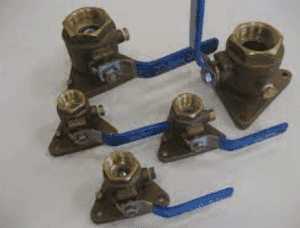 the fault more quickly was leaving the marina. It was impossible not to motor against a strong incoming tide until fifteen minutes after leaving the berth. One might motor for half an hour on a bad day until sufficient water was under the keel, allowing the engine to be extinguished. My point is the engine was always running, so it was difficult to isolate the problem. The strange thing was that when the yacht sat for extended periods, the bilge stayed bone dry.
the fault more quickly was leaving the marina. It was impossible not to motor against a strong incoming tide until fifteen minutes after leaving the berth. One might motor for half an hour on a bad day until sufficient water was under the keel, allowing the engine to be extinguished. My point is the engine was always running, so it was difficult to isolate the problem. The strange thing was that when the yacht sat for extended periods, the bilge stayed bone dry. little, but I had to find the cause. Another conversation with the old owner confirmed my suspicions that this problem had been around since the yacht was built. I had paperwork evidence that the flexy exhaust system had been changed under warranty. This had not resolved the issue.
little, but I had to find the cause. Another conversation with the old owner confirmed my suspicions that this problem had been around since the yacht was built. I had paperwork evidence that the flexy exhaust system had been changed under warranty. This had not resolved the issue.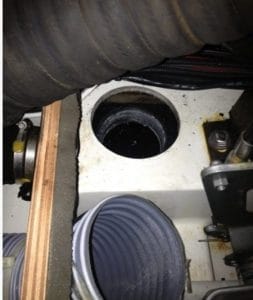 silencer is not visible without removing even more floor sections, and what a job that was! Not convinced it was leaking, eventually, we decided to remove it to examine the underside of the engine. It’s not an easy job to get it out, but finally, out she came. Absolutely nothing to see!
silencer is not visible without removing even more floor sections, and what a job that was! Not convinced it was leaking, eventually, we decided to remove it to examine the underside of the engine. It’s not an easy job to get it out, but finally, out she came. Absolutely nothing to see!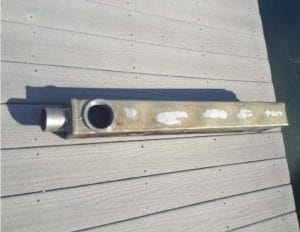 Now we get to the point of telling you this story. As it happens, the mystery was not confined to our yacht. I helped another dealer who was having a nightmare with a client. The same sort of problem, a tiny leak, but not when the yacht sat idle, so it was tough to diagnose the problem.
Now we get to the point of telling you this story. As it happens, the mystery was not confined to our yacht. I helped another dealer who was having a nightmare with a client. The same sort of problem, a tiny leak, but not when the yacht sat idle, so it was tough to diagnose the problem.
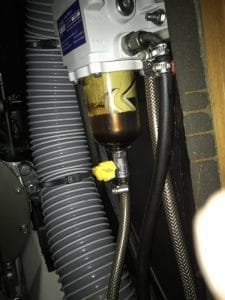 market; it takes little research to find a good one. Diesel bug treatment is not a long-term fix, so you must know if the problem reoccurs. My suggestion will warn you about diesel bug infection and save you the inconvenience of sampling fuel during your daily engine checks for water contamination, the other major cause of boating breakdowns.
market; it takes little research to find a good one. Diesel bug treatment is not a long-term fix, so you must know if the problem reoccurs. My suggestion will warn you about diesel bug infection and save you the inconvenience of sampling fuel during your daily engine checks for water contamination, the other major cause of boating breakdowns.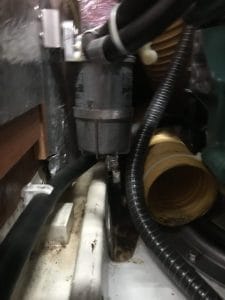 If you are happy to sample a small amount of fuel from a canister-type filter, that’s your choice, but remember, every time you open the fuel system to drain down a sample, you will potentially allow air into the fuel system (and that’s not good). The other big no-no about taking a sample is Diesel stinks; it’s like fixing your bike in your home’s kitchen. To see half a litre of fuel without disturbing it or contaminating the results within a glass bowl is so simple. This is the fastest way to ensure you have no worries about the fuel supply on your boat. A glass bowl water trap can also be the first item to look at if your engine starts to stutter. If you get water in the fuel, it will show up in seconds.
If you are happy to sample a small amount of fuel from a canister-type filter, that’s your choice, but remember, every time you open the fuel system to drain down a sample, you will potentially allow air into the fuel system (and that’s not good). The other big no-no about taking a sample is Diesel stinks; it’s like fixing your bike in your home’s kitchen. To see half a litre of fuel without disturbing it or contaminating the results within a glass bowl is so simple. This is the fastest way to ensure you have no worries about the fuel supply on your boat. A glass bowl water trap can also be the first item to look at if your engine starts to stutter. If you get water in the fuel, it will show up in seconds.